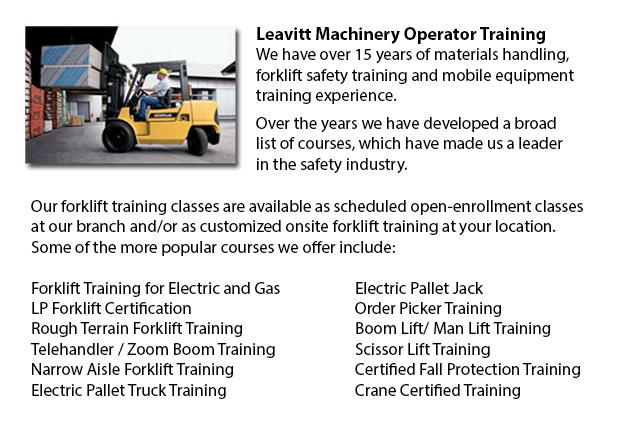
Aerial Lift Training Regina - Aerial forklifts might be utilized to accomplish several distinctive tasks done in hard to reach aerial places. Many of the odd jobs associated with this style of jack include performing routine maintenance on buildings with high ceilings, repairing telephone and utility lines, raising heavy shelving units, and pruning tree branches. A ladder might also be used for many of the aforementioned jobs, although aerial hoists offer more safety and stability when correctly used.
There are a few different designs of aerial lift trucks accessible, each being able to perform moderately different tasks. Painters will sometimes use a scissor lift platform, which can be used to reach the 2nd story of buildings. The scissor aerial jacks use criss-cross braces to stretch and extend upwards. There is a platform attached to the top of the braces that rises simultaneously as the criss-cross braces elevate.
Bucket trucks and cherry pickers are a different variety of aerial lift. They contain a bucket platform on top of a long arm. As this arm unfolds, the attached platform rises. Platform lifts utilize a pronged arm that rises upwards as the lever is moved. Boom hoists have a hydraulic arm which extends outward and lifts the platform. All of these aerial lift trucks call for special training to operate.
Training programs offered through Occupational Safety & Health Association, known also as OSHA, embrace safety techniques, machine operation, upkeep and inspection and device cargo capacities. Successful completion of these education programs earns a special certified certificate. Only properly qualified individuals who have OSHA operating licenses should run aerial lifts. The Occupational Safety & Health Organization has developed guidelines to maintain safety and prevent injury while using aerial lift trucks. Common sense rules such as not utilizing this apparatus to give rides and making sure all tires on aerial lift trucks are braced in order to prevent machine tipping are mentioned within the rules.
Regrettably, statistics show that over 20 operators die each year when running aerial hoists and 8% of those are commercial painters. The majority of these mishaps are due to inappropriate tire bracing and the lift falling over; for that reason some of these deaths were preventable. Operators should ensure that all wheels are locked and braces as a critical security precaution to stop the machine from toppling over.
Additional rules include marking the surrounding area of the machine in an obvious way to safeguard passers-by and to guarantee they do not come too close to the operating machine. It is imperative to ensure that there are also 10 feet of clearance amid any electrical cables and the aerial hoist. Operators of this machinery are also highly recommended to always wear the proper safety harness when up in the air.
-
Boom Trucks
Boom Trucks Training Regina - Boom truck are often utilized by phone, cable television and utilities organizations as they have extended folded arms which are commonly folded over the roofs of company vehicles. On the end of the extension of extendab... More -
Pneumatic Forklifts
Pneumatic Forklifts Training Regina - Pneumatic jacks are known as pallet vehicles or pump trucks and are broadly utilized in warehouses and delivery plants to transfer resources on pallets. Pneumatic lift trucks include a pair of metallic forks moun... More -
JLG Telehandler
JLG Telehandler Training Regina - In the late 1960's John L. Grove, with his wife Cora embarked on on a cross country trip in their RV. Newly retired, after spending several years working with his brother to assemble their crane business into an mark... More -
Scissor Lifts
Scissor Lift Training Regina - The scissor lift or table lift, is an automated industrial lift that has been adapted to be utilized in retail, wholesale, manufacturing and production settings. Mechanized scissor lifts have been used chiefly within pr... More -
Crown Forklift
More

Forklift Training Regina
TOLL FREE: 1-888-254-6157
Regina, Saskatchewan
forklifttrainingregina.com
Email Us
About Us


